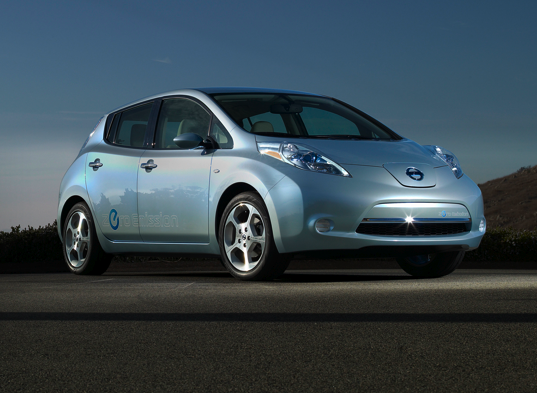If you commute to work and back each day, there’s one car you will no doubt come across on your travels. The Nissan Leaf is Japan’s flagship electric vehicle. It’s a compact hatchback that looks like a “regular” car and doesn’t sport any unusual styling.
It’s also one of the best-selling electric vehicles of 2015 – a trend that’s set to continue. But, if you’re trying to cut down on your commuting costs, should you consider a Nissan Leaf? The answer is “it depends.”

Image Source: Wikimedia Commons
Here are some reasons why it may make sense to trade your gas guzzler in for a green Nissan Leaf:
It boasts zero emissions
Carbon emissions may not be at the forefront of your mind, but they should be! Even if you’re not an environmentalist, there’s one train of thought to consider. Vehicles that aren’t good for the environment will get taxed a lot more in the future.
That means the car you drive today could cost you a fortune to keep on the road in the future! Electric vehicles offer zero emissions. As such, many governments encourage people to buy such cars by charging low tax or even none at all!
Financial reasons aside, the Nissan Leaf is a green vehicle. It won’t emit any nasty carbons into the atmosphere, especially when it’s idle. If you abhor petrol and diesel fumes, you’ll love the Nissan Leaf!
It’s perfect for city driving
Electric cars are usually suited to those that do a lot of local, daily driving. So, if you commute to work on the other side of town, the Nissan Leaf is the car is for you.
First of all, it offers plenty of range from a single charge. Of course, if range anxiety worries you, there are some things you can do to increase your range. For instance, only fit good tyres to the car such as the Bridgestone Potenza ones. And you can adjust your driving style for economy rather than speed.
Image Source: Wikimedia Commons
The Nissan Leaf does around 84 miles to a single battery charge. So, let’s say your place of work is five miles away from home, and you do around 20 miles of driving on the weekend. You’d only do 70 miles of driving a week, and you only need to charge your battery once a week!
It’s compact size makes it easy to park
In a busy town or city, it’s often hard to find a suitable parking space when you’re out and about. The good news is that parking is no longer stressful when you drive the Nissan Leaf.
It’s a compact hatchback and can fit into even the tightest of spaces! Plus, there’s plenty of technology to lend a helping hand. For example, the car comes with an “Around View Monitor” that gives you a 360-degree view around you. That’s thanks to the cluster of cameras that give a bird’s eye view of your surroundings.
In a nutshell, the Nissan Leaf is your perfect partner for city driving. It might not be the world’s most luxurious car. But, it’s a car aimed at those that want to lead a greener and more frugal lifestyle.






